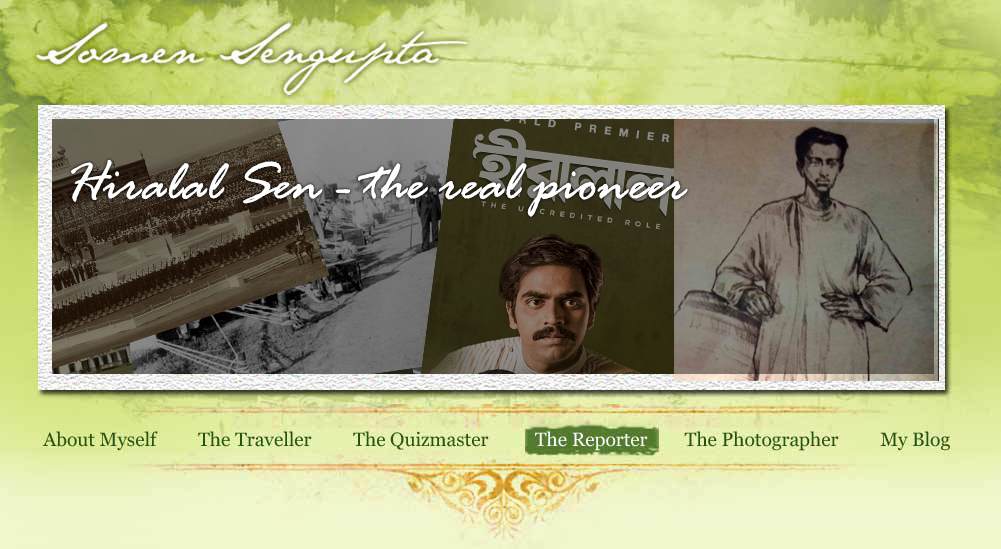Hiralal Sen – The pioneer who banished into oblivion.
The Statesman on 21st October 2022.
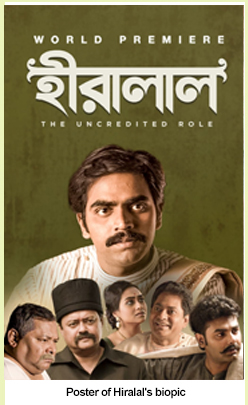 On 25th March 1917 The Englishman newspaper of Calcutta reported a news under the heading
“ Fatal Calcutta Fire “.
On 25th March 1917 The Englishman newspaper of Calcutta reported a news under the heading
“ Fatal Calcutta Fire “.
In it’s sub heading it says “ Bioscope Proprietor’s Daughter Killed “. In it’s report it stated of
gutting down an office and store room of Royal Bioscope Company at 9/1Bray Bagan street
near Cornwallis Square”.
What it did not mention was with this fatal fire one of the most important part of India’s cultural
history is destroyed forever. The flame of fire of that Saturday night permanently hushed all
tangible testimonial of India’s earliest work of cinema picture an art form that will soon become
the biggest mode of public entertainment in India.
The fire of that evening actually destroyed all work one Hiralal Sen’s cinematography made
under various companies since 1898 when in India movie making was an unknown craft. With
this Hiralal Sen pathetically lost his place in history to Dada Saheb Phalke whose 1913 motion
picture is now considered a pioneering work of Indian cinema and it very wrongly gives Phalke
the highest herald calling him father of Indian cinema.
The journey of Indian cinema making was actually started in Calcutta’s Classic Theatre on 4th
April 1898 when a short film of few minutes was shown before a play. This news was published
next day in Amrita Bazar Patrika and later in Indian Mirror – Though there is no evidence that
film screened on 4th April was made by Sen. The owner of the theatre Amarendranath Dutta
was good friend of Sen and in 1898 itself Sen purchased expensive camera and other equipment
from March John Wrench & Sons of London to form a company named HL Sen & Brothers
later known as Royal Bioscope. He sent d Rs 5000 and even paid a commission of 2.5% to a
company named John Elliot to import machines to Calcutta . In 1899 Sen purchased another
camera from Warwick Trading Company of London.
At that point of time as history records no one in India had any experience of making any
motion picture. Thus the assumption goes that any film made in India during that time span
was actually made by none other than Hiralal Sen.
However there is full evidences that from 1898 to till 1917 Hiralal Sen made almost all kind of
motion pictures and obtained a pan India fame covering Assam to Delhi. His pioneering work
got him the offer from British Government to film the great Delhi Durbar a rare honor for an
Indian film maker.
Hiralal Sen was born in Bogjuli village of Dhaka on 27th July 1869 ( 1866 or 1867 ?? ) in a rich
family.
His father was a top lawyer. At early age Sen won a national recognition by winning a
photography competition organized by Bourne & Shepherd . He went on winning seven all
India best photography prizes between 1887 to 1898. His love for photography was soon to be
converted into his love for handling a movie cinema.
When some European freelancers started showing films at various theatre hall of Calcutta , Sen
became a frequent there as spectator and even tried to learn it from them. His success was
minimum thanks to the non-cooperation from saheebs who did not like an entry of an Indian
in that space. By paying frequent visits to Star theatre where one Stevenson regularly used to
show films Sen tried his best to understand the language of cinema making .
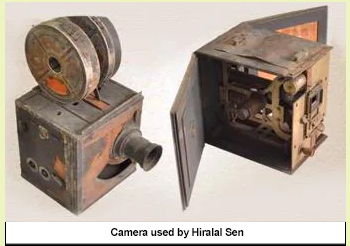 Sen with his avid interest in film making got a chance to learn it little more from Rev
Eugene Lafont of Calcutta’s St Xavier’s college. Sen got massive support from the man. It
was an unexpected blessing to Sen. Sen with his avid interest in film making got a chance to learn it little more from Rev
Eugene Lafont of Calcutta’s St Xavier’s college. Sen got massive support from the man. It
was an unexpected blessing to Sen.
By reading books on film making and with an imported camera Sen started a company
named Royal Bioscope in 1898 which was finally registered in 1902. Meanwhile he and
his younger brother Motilal had another show on 19th November 1898 again in Classic
Theatre. Advertisements of the show were published in The Statesman and The Indian
Mirror newspaper. Meanwhile Pathe Frere Company of France had a tie up with Royal
Bioscope and it helped Sen to learn many technical aspects and tips of movie making.
In 1900 Sen made two films –One was actually a recording of a Bengali stage play named
“Parasya Prasun” by Girish Ghosh and other was titled as “ A Panorama of Indian Scenes
& Processions” which was a collection of few small random shots of Chitpur Road,
bathing sequences in Ganges etc. This film was shown in Star Theatre of Calcutta on 10th
December 1898 before a Bengali play named “ Sati Ki Kalankini “ ?
In the same year Sen made two trick films with his new camera – One film was shown to
students of General Assembly which later known as Scottish Church College on 21st
November 1900 in their reunion – It had a commercial release in Classic Theatre on 21st
November 1900. Later on both the films had a commercial release on 2nd December
1900.
They first started commercial shows in Minerva theatre in 1899 and from 1901 Sen
brothers started showing films regularly at Dalhousie Institute drawing huge crowd in
every show. For commoners of Calcutta it was all new experience.
A huge amount of appreciation on one hand and with good business prospect on the other
Sen and his brother Motilal went on doing few more short films. Two more of Sen’s
movie were made in 1901. Those were a part of the play named Duti Pran , Laxman
Barjan and Moja. Last two were first shown on 3rd July 1901.
Amrita Bazar Patrika dated 9th February 1901 gives the evidence that Sen’s company is
doing film shows of atleast seven plays of Classic theatre including Bramar, Alibaba,
Sarala, Bridha O Sitaram etc.
In 1902 his company imported few more cameras from London and next year they got
the Government contract of filming the celebration of Edward- VII ‘s coronation in India.
This is considered India’s second news reel film after “ Return of a Wranger “ made by
Harishchandra Sakharam Bhatavdekar Bombay.
The contemporary media was all praised for Sen’s work.
A report published in The Bengalee dated 2nd December 1902 reads ….” The Royal
Bioscope Company, the company we understand have made a valuable addition to their
excellent repertory of photo accessories. They have united a high class and beautiful
finished machine for laking animated photography and they intended laking impression
of Indian life and scenery’.”
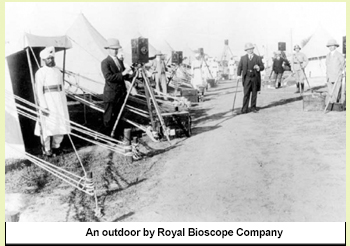 The Bengali periodical “ Bangabashi “ also hailed Sen’s work saying it’s work deserves
high appreciation. The Bengali periodical “ Bangabashi “ also hailed Sen’s work saying it’s work deserves
high appreciation.
Sen and his company stepped into history in 1903 when they filmed a complete Bengali
play named “ Alibaba O Chollish Chor” and released the film commercially. This was also
a filming of a stage drama and not based on an creative film script.
It’s advertisement proudly avowed “ Complete Drama – Vivid Drama – Flawless Drama”.
This was what Hindu Patriot dated 23rd January 1904 published an advertisement. It is
known that at this point of time Classic Theatre was closed for six months and it is
believed that it was closed for public because Sen was filming the stage play in that
period.
Important to note that it was the second time that they filmed Alibaba – Earlier Sen
bothers filmed a part of the play mostly of some dance sequences and that was shown in
9th February 1901 as an additional attraction of stage play. Actors who were captured in
that film were Amar Dutta, Kusumkumari etc.
This time it was a complete filming of that play.
If this “ Alibaba “ was really a complete feature film made by Sen and released
commercially in 1903 then this is not only the first complete feature film made in India
but the oldest film of the world Edwin Porter who made “ The Great Train Robbery “
also released in 1903. This is a huge honour for every Indian.
Many researchers doubted that this Alibaba may be an imported foreign film but film
historian Somnath Roy after checking all volumes of Motion Pictures ( 1894-1949 )
published by America’s Library of Congress has concluded that no such film was made in
Europe and America during that period – So Alibaba made by Sen in 1904 for the second
time was indeed a complete feature film made by an Indian.
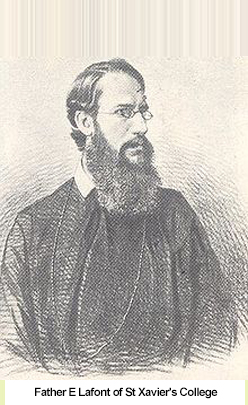 Sen touched one more milestone in 1905 when he made two advertisement films first of
it’s kind in India. He made one of Batakrishna Paul’s “ Edward Anti-malaria Specific “ and
other is CK Sen’s “ Jabakusum Hair Oil “. The first one was shot at Dumdum while second
one was shot at Agarpara near Calcutta. In that sense Hiralal Sen is also the father of
Indian commercial advertisement movie. Before Sen no one ever thought to do a
commercial movie. Sen touched one more milestone in 1905 when he made two advertisement films first of
it’s kind in India. He made one of Batakrishna Paul’s “ Edward Anti-malaria Specific “ and
other is CK Sen’s “ Jabakusum Hair Oil “. The first one was shot at Dumdum while second
one was shot at Agarpara near Calcutta. In that sense Hiralal Sen is also the father of
Indian commercial advertisement movie. Before Sen no one ever thought to do a
commercial movie.
In the same year by filming nationalistic leader Surendranath Banerjee’s political meeting
at Calcutta’s Town Hall Sen brothers made it of India’s first political meeting in motion
picture. One Jyotish Sarkar took the charge of the camera in this project. Very
unfortunately h these land-marking works now have no evidences.
Sen brothers “ Royal Bioscope Company “ soon became the top travel cinema company
doing all kind of entertainment.
Sen’s company started getting invitation to film private functions of rich and famous in
Bengal, Orissa and Assam. They were called to film private parties of royal families of
Bhawal and Baneli.
Apart from their regular shows in Classic theatre Sen also used to show his films in
Minerva and National theatre and even with a foreign travelling theatre company named
Unique. On 2nd February 1901 Sen had his cinema show in All India Industrial Exhibition
and received a gold medal with grand ovation for his high quality cinematography skill.
The grand success of Royal Bioscope inspired to come up plethora of new bioscope
companies like London Bioscope, Oriental Bioscope, Imperial Bioscope etc and all of them
had their primary learning of the art from Hiralal Sen.
Lord Curzon who had seen Sen’s work in one of the garden party at Malda was pleased to
see his work. No wonder that in 1903 Delhi Durbar Sen was invited to capture moving
moments in motion camera.
“ Royal Bioscope “ started facing tough competition from 1905 onwards when JF Madan
entered Bengal to do the same business.
That was the time when Hiralal also failed to show his steel as a business man and failed
to respond to Paul Royal the head of Pathe Frere on time for a joint venture. Pathe Frere
was very interested to work with Sen in India but they were simply ignored him.
In their absence that place was utilised by JF Madan who played smart to earn from single
scope to make money and fame and he did it very well.
Last big project that Sen executed was filming of Delhi Durbar in 1903 and arrival British
Royal Family George-V and Queen Merry ‘s arrival in Delhi in 1911.
In 1913 his younger brother Motilal parted with him and Sen also left Royal Bioscope
with bad memories.
He first formed a company named HL Sen & Co but soon left to join a new company named
London Bioscope with a partner named Ram Dutta . They even opened a show house
where present day Ganesh Talkie is situated. However Sen was soon financially cheated
and lost everything. Sadly by this time or so he was detected with cancer.
Sen now jobless, near insolvent and suffering from cancer had entered into a pathetic
stage of life. It forced him to sell out his house in Haritaki Bagan near Ultadanga and
forced him to come in a rented house by the address 18 Blacky Lane.
In 1917 after making atleast 40 films of different form Hiralal Sen painfully saw his entire
foundation work is consumed by flame leaving no evidences of his pioneering
contribution finally died as an isolated and broken man. Even from his death bed Sen kept
on giving free consultation to young film makers and even to JF Madan to whom he lost
his empire.
 In 1917 JF Madan became a giant in Indian film and Dada Saheb Phalke who started
making film much later of Sen captured the crown of India’s pioneering persona. In 1917 JF Madan became a giant in Indian film and Dada Saheb Phalke who started
making film much later of Sen captured the crown of India’s pioneering persona.
In 1927 Government of India instituted a “ Cinematograph Enquiry Committee” under
the presidency of Dewan Bahadur T Rangachari .This committee interviewed Dada
shaheb Phalke on 13th February 1928 and based on Phalke’s claim that before him in
India there was none who worked with cinema blindly and irresponsibly concluded that
Phalke is the pioneer of Indian cinema. This narrative ravaged the truth that nearly 9
years before Phalke’s feature film Satyavadi Raja Harishchandra a man from Calcutta
indeed made a complete drama on screen. This wrong narrative is now cemented.
Without belittling one this must can be said that Hiralal Sen is no doubt the father of
Indian cinema but his own weakness and misfortune declined him the right position in
history.
Roughly Hiralal Sen has made three advertisement reels, five news reels, eight
documentaries including political meeting and various marriage ceremonies of rich
families. He also made more or less twelve feature films which were all filmed version of
stage plays.
Hiralal Sen is a legendary pioneer who did a tremendous job to popularise cinema in India
.His life and work were very badly archived .Today just hundred years after his demise
he is not even remembered by common cinegoers. There is not a single well researched
biography of him available in the market. The fire at his younger brother’s house which
killed his niece had also killed his entire achievement of life.
Today not a single film made by him is available to watch not even a single still photo and
a photograph of himself. Only some paper cutting news, old advertisements, personal
memories and few tangible evidences like his camera etc somehow protecting his name
from getting banished into oblivion.
Click here to view the original article
|
